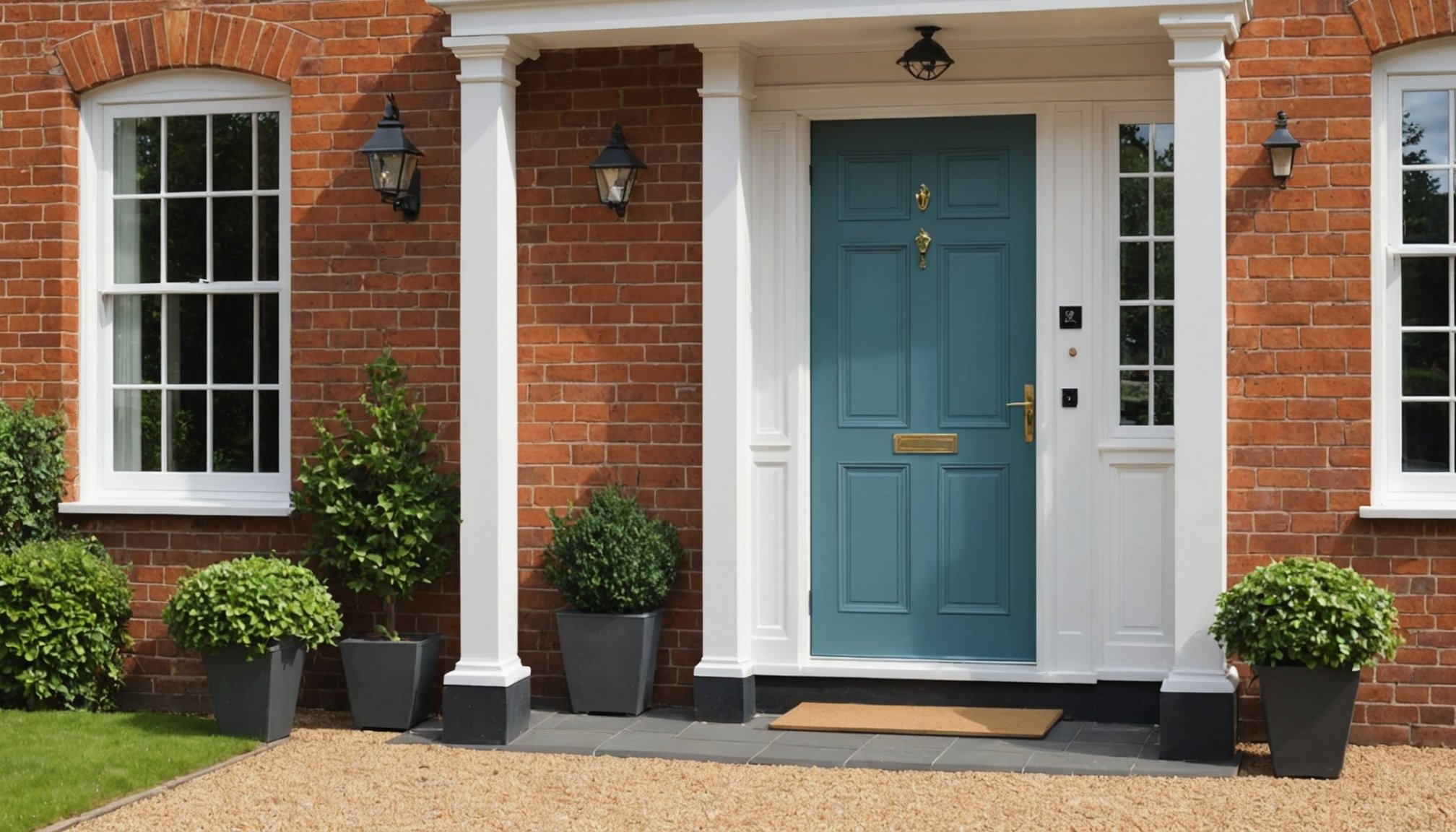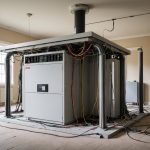Understanding Heat Loss in Entryways
Entryways are critical zones for heat loss in a home. This common issue occurs through gaps, poor insulation, and unsealed doors. Additionally, the fluctuating British climate compounds this challenge, demanding effective solutions.
Addressing heat loss in entryways is vital for UK homeowners focused on energy efficiency. High heat loss can lead to increased energy bills and unnecessary wear on heating systems. Fortunately, various fixes can enhance efficiency and reduce expenses.
Sujet a lire : Seamlessly Blend Smart Lighting into Your UK Home: A Homeowner’s Guide to Integration
The UK’s climate plays a crucial role in dictating energy requirements. With temperatures varying significantly, maintaining a consistent indoor environment can be taxing without proper measures. By tackling heat loss, homeowners can significantly stabilise indoor temperatures, boosting comfort levels.
Key factors to examine include:
A lire en complément : Illuminate your life: explore lustria's stunning lighting
- Sealing gaps around door frames
- Installing draft excluders
- Enhancing insulation in walls and ceilings
Ultimately, focusing on securing entryways not only contributes to better energy efficiency but also reduces environmental impact. Homeowners who invest in rectifying these issues will find enhanced comfort, alongside a reduction in their carbon footprint. Familiarising with these mechanisms and taking the necessary steps can provide long-term benefits and save costs in energy consumption.
Smart Technologies for Entryway Energy Efficiency
Modern smart entryway solutions combine cutting-edge technology with everyday practicality, offering substantial energy-saving benefits. At the forefront, smart locks are transforming home security and energy management. By allowing remote access and programmable locking schedules, they help minimize unnecessary energy consumption. For instance, automatically adjusting settings can ensure lights or HVAC systems operate only when needed, reducing waste.
Beyond security, the choice of energy-efficient doors plays a crucial role in minimizing energy costs. Made from materials like fibreglass or insulated steel, these doors effectively limit heat transfer, keeping interiors comfortable while lowering heating and cooling expenses. Many of these doors also feature advanced weatherstripping and airtight seals for enhanced thermal performance.
Innovations in entryway technology continue to evolve, integrating seamlessly with smart home ecosystems. Consider sensors that communicate with smart thermostats to adjust interior climates based on door usage, or voice-activated assistants that provide real-time entryway status updates. Collectively, these advancements not only bolster home security but also contribute towards a more sustainable lifestyle by emphasizing efficiency and resource conservation. Embracing these technologies can lead to a significant reduction in a household’s carbon footprint, making them an attractive option for eco-conscious homeowners.
DIY Solutions to Reduce Heat Loss
Engaging in home improvement projects to tackle heat loss can make your home more comfortable and energy-efficient. Here, we will explore practical DIY heat loss prevention methods, focusing on insulation techniques.
Weatherstripping Options
Weatherstripping is a simple yet effective way to minimize heat loss. By applying materials like adhesive-backed foam or felt strips around doors and windows, gaps where warm air escapes can be sealed. V-strips, which fit into door and window channels, are also popular. Each option has varying levels of durability and cost-effectiveness, making it crucial to choose the right one for your needs.
Draft Stopping Techniques
Cold drafts can significantly affect indoor comfort. To combat this, draft stopping techniques include using door sweeps, which block gaps at the bottom of doors, and rope caulk, ideal for sealing irregular gaps. These measures are easy to implement and provide a quick fix to reduce unwanted air infiltration.
Insulation Material Recommendations
Proper insulation is vital for effective DIY heat loss prevention. Consider using fiberglass batts for walls and attics as they provide excellent thermal resistance. For easy application, spray foam insulation is a versatile option, fitting into crevices and expanding to fill voids. cellulose insulation is an eco-friendly choice, made from recycled paper products treated for fire resistance.
Product Recommendations for UK Homeowners
Selecting the right energy-efficient products can enhance both comfort and savings. For UK homeowners, top-rated energy-efficient doors offer enhanced insulation, reducing heat loss and keeping homes cozy. Leveraging advanced sealants and double-glazing, these doors significantly lower energy consumption levels. Next, consider investing in smart home devices that monitor energy use efficiently. Devices like smart thermostats optimise heating schedules depending on household patterns, while energy monitors provide real-time data, helping you adjust usage accordingly.
Utilising sustainable materials for renovations is another essential strategy to enhance your property’s eco-friendliness. Options such as recycled glass, bamboo flooring, or reclaimed timber not only make environmental sense but add a unique character to your living space. These materials embody sustainability by decreasing the need for raw resources and reducing overall waste production.
For those aiming to intertwine efficiency with home improvement, focusing on these smart home devices and sustainable materials ensures an environmentally-resilient future while enhancing personal comfort. Selecting products tailored for the UK’s climate will maximise these benefits, enabling a balanced approach to energy conservation and aesthetic enhancement. Considering these aspects will ensure a harmonious blend of practicality and sustainability in every renovation project.
Case Studies: Successful Heat Loss Reduction
Exploring real-life examples of heat loss reduction unveils tangible results achieved by UK homeowners. These energy efficiency success stories highlight practical strategies that have led to significant improvements.
A fascinating study involves a family in the Midlands, who sought to enhance the thermal efficiency of their Victorian home. By installing insulated wall systems, they successfully reduced their energy consumption by 25%. This not only cut their energy bills substantially but also improved indoor comfort. Such practical adaptations often offer inspiration to others facing similar challenges.
Another noteworthy example comes from a group of homeowners in North London. They collectively adopted solar thermal panels and revamped their attic insulation. These actions led to a remarkable 30% decrease in heating costs, showcasing how small changes can reap large financial benefits.
Lessons learned from these initiatives revolve around meticulous planning and engagement with professionals. Many homeowners observed that expert consultation provided insights crucial to harnessing the full potential of energy-saving technologies.
These cases demonstrate the quantifiable benefits of heat loss reduction, offering scalable solutions for others. Emulating these strategies can empower homeowners to make informed decisions, ultimately achieving enhanced energy efficiency and reduced environmental impact.
Benefits of Reducing Heat Loss
Reducing heat loss in homes has a significant impact on both costs and the environment. Cost savings are noticed immediately, as less energy is required to maintain comfortable indoor temperatures. This decreased demand leads to reduced utility bills, offering financial ease to homeowners.
In addition to economic benefits, enhancing a building’s energy efficiency by minimising heat loss contributes to reducing the environmental impact of energy consumption. This effort helps in decreasing greenhouse gas emissions, which play a critical role in combating climate change. For communities prioritising sustainable practices, focusing on energy efficiency serves as a tangible measure towards environmental stewardship.
Moreover, the long-term energy efficiency benefits extend beyond immediate savings and environmental concerns. Homes with improved insulation and reduced heat loss often see an appreciation in property value, making them a wise investment. The community at large benefits from the cumulative effects, such as reduced strain on power grids during peak energy usage times.
Emphasising these strategies encourages the use of renewable resources and fosters a culture of sustainability, promoting a more responsible energy use lifestyle. Adopting these energy efficiency measures yields substantial returns both personally and collectively, creating a more efficient, and environmentally respectful society.











